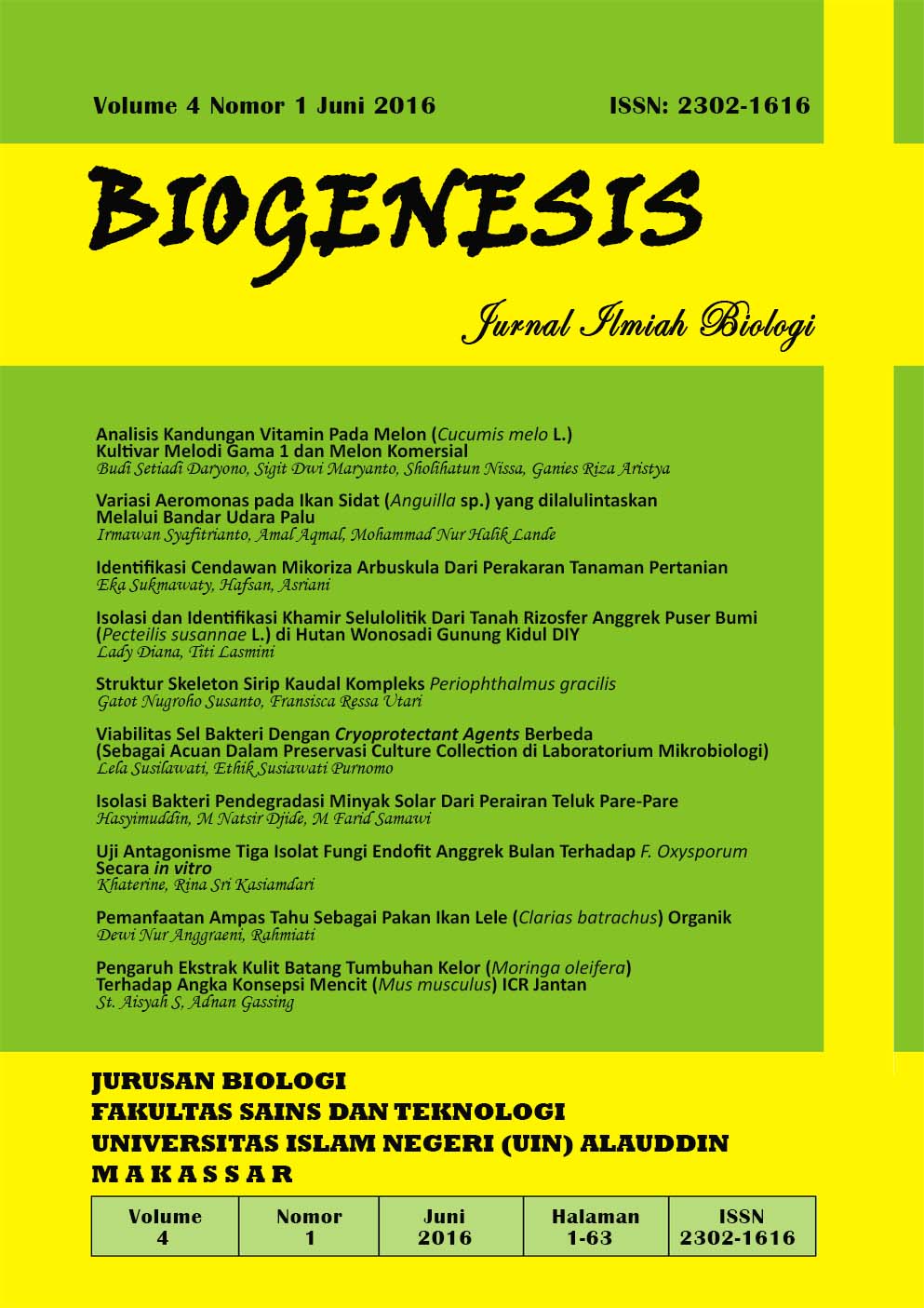Isolasi dan Identifikasi Khamir Selulolitik Dari Tanah Rizosfer Anggrek Puser Bumi (Pecteilis susannae L.) di Hutan Wonosadi Gunung Kidul DIY
Abstrak
P. susannae (L.) Raf. is terrestrial orchid grown on the floor of Wonosadi forest. They belong to endangered species of orchid. Those orchids have grown well on degraded leaf litter and surround the grass. So, these plant were interesting to be elucidated especially for their nutrient availability. The was investigate the possibility of yeast associated with terrestrial orchids and cooperate in the provision of nutrients. The research objective was to obtain cellulolytic yeast on soil of root system P. susannae (L.) Raf. The research began with rhizosphere soil sampling on orchids root system P. susannae (L.) Raf. in two place in Forest Wonosadi. Soil samples were analyzed in the laboratory of microbiology, including the determination of the population of cellulolytic yeast and yeast isolated from soil of root system P. susannae (L.). directly from root system using Carboxy methyl cellulose medium (CMC), incubated for 5 days. Colonies were counted for the determination of population growth. Yeast colonies were grown separately isolated as a single culture. Sorting trough growth experiments using a form of cellulose (cellulose microcrystalline, leaf litter and paper) was different. Isolates were grown on microcrystalline cellulose selected for further testing based on the ability to use CMC. Activity was determined by the use of cellulose determine reducing sugar levels (glucose) was released using a spectrophotometer (OD 540 nm). The results showed that the rhizosphere soil P. susannae (L.) Raf. containing a yeast population (17x102 CFU and 2.3 x 102 CFU) and was dominated by the four isolates (K2, K16, A9 and A10) cellulolytic yeasts. The results of the identification of the four isolated of yeasts like Saccharomyces sp. (K2) and Candida sp. (K16, A9 and A10).##submission.copyrightStatement##
##submission.license.cc.by4.footer##COPYRIGHT AND LICENSE STATEMENT
COPYRIGHT
Biogenesis: Jurnal Ilmiah Biologi is published under the terms of the Creative Commons Attribution license. Authors hold the copyright and retain publishing rights without restriction to their work. Users may read, download, copy, distribute, and print the work in any medium, provided the original work is properly cited.
LICENSE TO PUBLISH
1. License
The use of the article will be governed by the Creative Commons Attribution license as currently displayed on http://creativecommons.org/licenses/by/4.0.
2. Author’s Warranties
The author warrants that the article is original, written by stated author/s, has not been published before, contains no unlawful statements, does not infringe the rights of others, is subject to copyright that is vested exclusively in the author and free of any third party rights, and that any necessary written permissions to quote from other sources have been obtained by the author(s).
3. User Rights
Under the Creative Commons Attribution license, the users are free to download, reuse, reprint, modify, distribute and/or copy the content for any purpose, even commercially, as long as the original authors and source are cited. No permission is required from the authors or the publishers.
4. Co-Authorship
If the article was prepared jointly with other authors, the corresponding author warrants that he/she has been authorized by all co-authors, and agrees to inform his/her co-authors of the terms of this statement.
5. Miscellaneous
Biogenesis: Jurnal Ilmiah Biologi may conform the article to a style of punctuation, spelling, capitalization, and usage that it deems appropriate. The author acknowledges that the article may be published so that it will be publicly accessible and such access will be free of charge for the readers.


